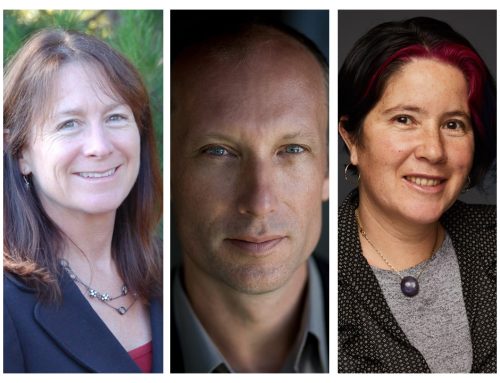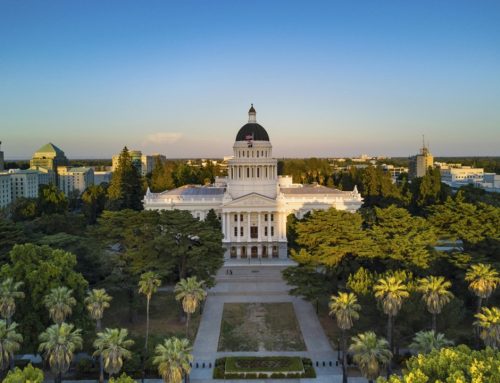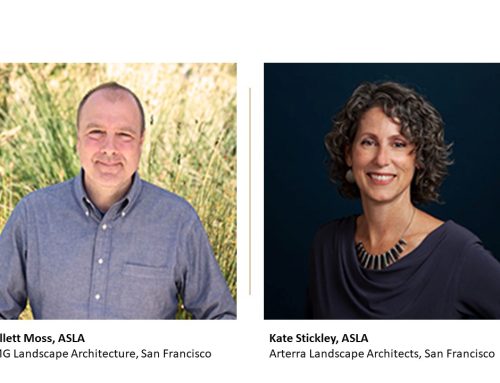by Jared Green
In the final decades of the 19th century, the new art of landscape architecture was born, in large part due to the efforts of Frederick Law Olmsted. This new profession offered “very specific responses” to the social, political, and environmental challenges of the time, argued Charles Waldheim, Hon. ASLA, the John E. Irving professor of landscape architecture at Harvard University Graduate School of Design, in a panel discussion organized as part of the year-long Olmsted 200 program. “Landscape architecture was radical during his time — a whole new field focused on social progress and reform.”
Before founding the profession of landscape architecture, Olmsted had been a reporter and superintendent of Central Park in New York City, a commission he had won with a design created with Calvert Vaux. Waldheim argued that the 1857 economic shock was a “hinge point” that created demand for a “whole new set of practices, focused on social justice, equity, and public reform.” Economic change created the conditions for landscape architecture.
According to John Stauffer, the Sumner R. and Marshall S. Kates professor of English and African and African American studies at Harvard, Olmsted was long interested in social reform, particularly in the South, where he traveled as a reporter for The New York Daily Times, which later became The New York Times. His reporting formed the basis of three books, which were later packaged in a single, more staunchly abolitionist book on the eve of the Civil War: The Cotton Kingdom: A Traveler’s Observations on Cotton And Slavery in the American Slave States, 1853-1861. “As a writer focused on slavery, he illuminated the South for the North,” Stauffer said. And his writings has enormous political impact: “Olmsted’s books convinced England to not recognize the Confederacy.”
Other than the first-person narratives by slaves in the South, Olmsted’s writings are the most “detailed and accurate slave narratives” available, Stauffer contends. While Olmsted wasn’t an abolitionist at least at first, he “gradually become anti-slavery.”
His early focus was on “improving the land, self, and society — and he championed restoration and regeneration.” He believed American regeneration required infrastructure, which in turn required broad public support and engagement with communities. He wanted to see the South and the rest of the country build public and democratically accessible canals, roads, town squares, parks, schools, and libraries.
While town squares and parks “partially existed in the South,” he found through his travels there were “very few roads and schools, and no restaurants or libraries.” The South had no public realm; it was all private land in the form of massive plantations. Through his depictions in his articles and books, he subtly spoke out about life on southern plantations and slavery.
He painted a portrait of plantations as “primitives places” where everyone working there was “mostly illiterate.” He saw plantations as small universes upon themselves, feudal societies, where the plantation owner was “judge and executioner.” He was horrified by the southern criminal system in which no slave was allowed to testify. His time living on plantations drove him to call for “public infrastructure for a democratic community.”
In the South, capital was invested in private land and human bodies and little in anything else. “Olmsted saw frontier conditions everywhere, dilapidation and carelessness.” While Southern romantic visions of an immaculate white house in a plantation were widespread, he found the reality was “less than 1 percent of the population were wealthy white planters; the rest lived in rude dwellings.” No aesthetic improvements were made for the non-elites, which created a “sense of backwardness” in the whole society.
Olmsted was anti-slavery, but he also wrote statements that are understood to be racist. While in his reporting he sought to be balanced — reporting both the perspective of the white landowner and the slave — he made comments such as “some slaves prefer being slaves.” But in his writings, he was also sympathetic to Black yeoman and subsistence farmers, Stauffer said.
Olmsted was a reformer in political, aesthetic, cultural, intellectual, and material senses. “His reform vision took an aesthetic form” in the design of a system of public parks and boulevards in so many cities. “Central Park is how he would have liked to improve the South, with all classes mixing.” However, it’s important to recognize that the creation of Central Park involved the displacement of Seneca Village, a Black middle class community, by the New York City government.
According to Sara Zewde, assistant professor in the practice of landscape architecture at Harvard University and founder of Studio Zewde, Olmsted forged the new field of landscape architecture as a way to “triangulate between his interests in farming, law, and politics.” There was no existing profession that brought all his interests together. And while the prevailing narrative about Olmsted is that he was first a journalist and then pivoted to become landscape architect, Zewde sees a “linearity in these interests.”
At the start of the Civil War, Olmsted was working on the same social reform and anti-slavery causes through his writings, advocacy, and design projects. “If we look chronologically at his works, he went back and forth between travel, advocacy, and landscape architecture practice. They were all very much part of the same project.”
For Zewde, a landscape architect, educator, and “Black woman raised in the South,” this is perhaps Olmsted’s most important legacy to the field of landscape architecture — he demonstrated its potential to work at multiple scales and in multiple formats, through writing, advocacy, and design.
With the beginning of the Civil War, he thought the institution of slavery was “corrosive” on southern society. “People who owned slaves had lost the ability to investment in themselves or their society. The health of soils, the landscape, and economy were all skewed. There was no innovation or culture, art, or civic ground.” Leaving Central Park while it’s still being constructed to re-write his articles for Cotton Kingdom is the “clearest articulation of how singular his interests are,” Zewde argued.
He also produced a spatial analysis of the Cotton Kingdom, mapping the concentration of enslaved people and the health of each southern state economy in order to show the “inverse relationship between ecological health and the distribution of resources and slavery.”
In 2013, Zewde followed the path of Olmsted’s journeys through the South to better understand his contribution to landscape-scale thinking. Retracing his steps, Zewde reached the conclusion that the socio-economic conditions Olmsted witnessed remain persistent 165 years later, but the physical conditions have changed. The landscapes of slavery have been “recast, obscured, and erased.”
Zewde wondered what Olmsted would think of landscape architecture being “used as a tool or weapon to untell stories.” For example, visiting Whole Field Square in Savannah, Georgia, Olmsted “took great care in transcribing the names on headstones in an African burial ground. He was very descriptive and expository.” But while visiting the site, Zewde found “no sign or marker of the existence of what he found.” Landscape architecture had recast the story of the place. Talking to visitors, “everyone had no idea what Olmsted witnessed or that were Black bodies buried there. The headstones had been removed to another part of the city, the ‘other side of the tracks.’”
Olmsted advocated for how the profession should be used — in the same tradition as his vision for reform. “Olmsted offered a methodological proposition — a multi-scalar approach looking at macro-ecologies and economies, down to the level of social interaction.” Following his model, landscape architecture is as focused on the “national state of democracy as what that means for a path in the park.”
In the Q&A, Waldheim noted that the idea of site design and politics as somehow in opposition is false. For Olmsted, “they were one in the same.”
For example, Stauffer noted that Olmsted was deeply suspicious of “privatized things,” like he found everywhere in the South. “He criticized that he couldn’t find a hotel room or restaurant anywhere on his travels.” For him, to improve a “community aesthetically and culturally was also political.”
While he isn’t sure Olmsted read Frederick Douglass’ writings on aesthetics and reform, he believed Olmsted, like Douglass, thought that “true art breaks down racial barriers because it highlights the essential equality of all people. Douglass’ aesthetic vision was: within unity, there is diversity, and within diversity, there is unity.” The poet Walt Whitman had a similar sentiment with “every blade of grass. Out of many one. Every human being is different, but equal despite differences.”
Zewde said in his personal letters Olmsted was much more “forthcoming and explicit” about his objections to slavery, but in his public writings was “more subversive in order to not lose his southern audience.”
His writings would describe the aesthetic qualities of the land, such as the light at dusk, which was then “paired with a shocking description of torture of a slave.” His writings were also “peppered with compelling conversations with enslaved people,” asking them what is most important to them. He relayed their “striving for life” amid details of the landscape. The “proposition is quite profound” — life and freedom are also about aesthetics. “The cultural and aesthetic framing of life makes it worth living.”
Speaking to one enslaved person, Olmsted asks them what they hope for if they became free. They said they wish to “have a home, plot of land, and a wife, to work the land.” Zewde believes this was a notable moment for Olmsted, who then carried these ideas back to New York and his future work creating public spaces. The entire hour-long session posted by Olmsted 200 can also be watched below:
Tagline Box for Emphasis
Your Content Goes Here






